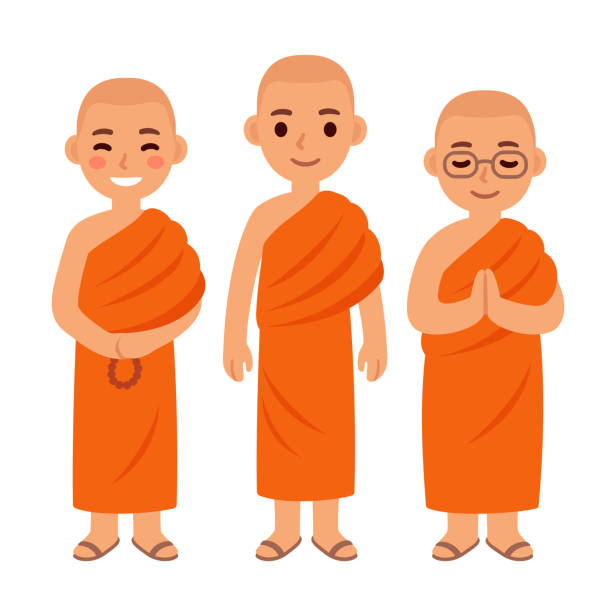
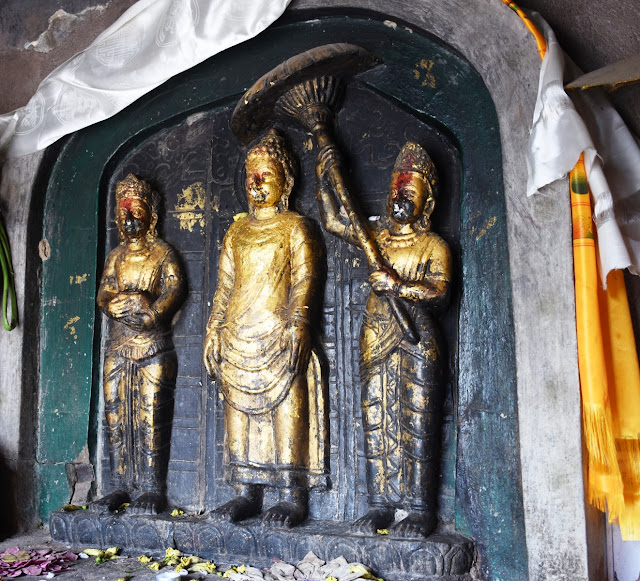
Buddha came down to earth Viewers(2)
The Buddha performs the twin miracle to trounce the ascetics of other sects at the Gandamapikkha mango tree
The Buddha's displayed Yamakapatihāriya at Sravasti, in the state of Kosala, on the full moon day of the 8th lunar month, one day before the beginning of the rains retreat.Yamaka means "twin" or "pair." Thus the yamakapatihāriya is the "twin miracle": water with fire. When performing the miracle, a great water pipe sprouted from the upper half of the Buddha's body, while a great flame shot from the lower half of his body, and so on until finally the water came out from one body’s hair and fire came out from the next body’s hair, alternatelyin each and every hair.The twin miracle has been assigned to perform only by the Buddha. The place where the Buddha performed the twin miracle on this occasion was the foot of a mango tree, called gandamapikkha, in the town of Sravasti. The reason for his showing the miracle was that ordinees of other sects had challenged him to a "competition of psychic powers." Upon knowing that the Buddha would display the twin miracle only at the foot of a mango tree,the members of other sects and their supporters cut down all the mango trees in the vicinity, leaving none left. Fortunately, a gardener of King Pasenthihad offered the Buddhaone ripe mango. Having eaten the mango, the Buddha instructed to plant the seed and water it with water for washing his hands. The seedling sprouted up and grew voraciously with lots of fruits.
The Buddha went to spend the Vassa (rains retreat) in the Tavatiṁsa heaven in order to teach the Buddha’s mother
After performing YamakaPatihariya, the Buddha went to Tavatiṁsa heaven to spend the Vassa (rains retreat)there and to teach the mother, Queen Mahamaya, who had been reborn as a deity in the Dusita heaven.The Buddha sat under a parichatta tree on the pandu-kambalasila asana in Tavatiṁsa heaven. All the deities in the heaven realms, includingthe Buddha’s mother,came to listen to the Buddha's teaching. The Buddha taught the mother and other deities the Abhidhammathroughout the Vassa. Hearing the teaching, the Buddha's mother attained Stream Entry, while another800 million deities attained the Path and Fruit according to their dispositions.
The Buddha descended from Tavatimsa heaven back to earth
The Buddha told MogallanaThera that the Buddha would came back to earth at the end of the Vassa (fullmoon of the 11th lunar months) at Sankisa city where SariputtaThera was staying. Before that timeKing Saggaconjured up three stairways for the purpose: a gold stairway, a silver stairway and a jewel stairway. The gold stairway,on the right, was for the devas. The silver stairway, on the left, was for the Brahmas. The jewel stairway, in the center, was for the Buddha. The top of each stairway rested on the summit of Mount Sineru, while the foot of the stairways rested at the city gates of Sankisa. On the last day of the Vassathe Buddha, accompanied by MahaBrahma, holding the ceremonial umbrella,and King Sagga,carried the Buddha's bowl, came back toearth. Playing the lute and singing was the deva Pancasinkhara, on his right is MatuliDevaputta, who strewed celestial flowers on the path as the Buddha descends. The Buddhafirst stepped onto the earth at the city gates of Sankisa. The place was later known as the "Acalacetiya," or a "Buddha's footprint."
When stepping on earth, the Buddha looked upwards and the worlds of devas (devaloka) and the Brahmas (Brahmaloka) were revealed. Then the Buddha looked downward, and the hell realms were revealed. At that time the celestial realms, the hell realms and the human realms throughout the universe were all visible to each other.The event is called“the Buddha's opening of the worlds." The worlds that the Buddha opened at that time were the three worlds; heaven (devaloka), hell (yamaloka) and earth (manussaloka).Devaloka is all the worlds from the Brahmaloka down to all the celestial realms. Manussaloka is the world of human beings. Yamaloka is the lower realms, all the levels of hell down to the lowest hell, avici.At that instant the beings living in these three realms could all see each other. And all could see the Buddha descending from Tavatimsa gloriously.At that time, of all devas, humans and beasts, even down to the tiniest red or black ant, who saw the Buddha, there was not one among them who did not want to be the Buddha.
Upon arriving at Sankisa on the fullmoon of the 11th lunar month, Sariputtaarahantathera was the first one to greet the Buddha, followed by Upalavannaarahantatheri.The Buddha preached Dhamma to millions of people who had been waiting for the Buddha at Sankisa’s city gates. About 300 million people became Ariyapuggala. The Buddha then asked questions to the followers aiming to announce that SariputtaArahantaThera was next to the Buddha in puñña (wisdom). On this special occasion, people was delighted to offer food to the Buddha and Sangha which has been known as Devorohana. No matter how far a person was from the Buddha, the foods never dropped out of the Buddha’s alms bowl.
Sankisa is the very important sacred place in Buddhasāsana.Sankisa marked the place as Ajalacetiya where the Buddha allowed the beings in all 3 lokas to see each other. It is also the place where Abhidhammadesana was first revealed on earth via SariputtaArahantaThera. The importance of the area was supported by the Asoka pillar which has an elephant symbol on top. This meaningful Asokha pillar marked on the duty of the Buddha to preach Abhidhamma to the mother at Tavatiṁsa heaven. For these reasons,Sankisa’s people should be proud of being in the vicinity of the sacred area and shouldjoin hands in preserving and developing this sacred place for Buddhasāsana. May all Sankisa’s people who are going to perform these meritorious deeds attain VeesatiAriyaMagga, VeesatiSamaññaphala, EkaNibbana abruptly in this life.
तावतिंस देवलोक से बुद्ध पृथ्वी पर संकिसा नगर में आये
(जिसे देवोरोहना) देवों का उदय होना) के नाम से जाना जाता है)
भगवान बुद्ध आठवें चंद्रमास की पूर्णिमा पर अपनी माता महामाया को अभिधम्म की देसना देने के लिए तावतिंस देवलोक में वर्षावास के लिए गये थे। जो देवलोक में सेतकेतु देवपुत्त के रूप रह रही थी। बुद्ध ने तीन महीनों तक अभिधम्म की देसना दी, उस समय उनकी माता ने सोतापन्न अवस्था को प्राप्त किया। जिस प्रकार माता अपने बच्चों का पालन पोषण करके उन्हें एक अच्छा व्यक्ति बनाती हैं, उसी प्रकार बच्चों को अपने माता-पिता की अच्छी तरीके से देखभाल व सेवा करनी चाहिए। और माता-पिता के प्रति सदैव सम्मान का भाव रखना चाहिए। इसी कारण से भगवान बुद्ध ने भी अपनी माता को देवलोक में जाकर अभिधम्म की देसना दी। बुद्ध ने मोग्गलान थेर से कहा कि वर्षावास के अन्तिम दिन बुद्ध संकिसा में आयेगें जहां सारिपुत्त थेरा ठहरे हुए हैं, वहां ग्यारवें चंद्रमास की पूर्णिमा को तथागत आयेगें। बुद्ध के आने से पहले देवताओं के राजा सक्क ने विसनुकम्म देवपुत्त से कहा कि बुद्ध ग्यारवें चंद्रमास की पूर्णिमा पर संकिसा जायेगें। तो विसनुकम्म देवपुत्त ने तीन सीढियों के मार्ग का निर्माण किया। जो सोने की, चाँदी और हीरे की बनी थी। दाहिनी ओर सोने की सीढ़ी देवताओं के लिए, बायीं ओर चाँदी की सीढ़ी ब्रह्मा के लिए और बीच में हीरे जवारात की सीढ़ी बुद्ध के लिए, उन सीढ़ियों का ऊपरी सिरा सुनेरू पर्वत पर टिका था, और सीढ़ियों का निचला सिरा संकिसा के द्वार पर रखा था। वर्षावास के आखिरी दिन बुद्ध महाब्रह्मा के साथ जोकि बुध्द के ऊपर छाता लगाये थे। और राजा सक्क बुद्ध का पात्र पकड़े हुए थे। धरती पर सीढ़ियों से उतरें। जैसे ही बुद्ध पृथ्वी पर उतरे मातुली देवपुत्त ने बुद्ध के मार्ग में पुष्प बिछायें। बुद्ध ने प्रथम पग संकिसा नगर के द्वार पर रखा। जो स्थान बाद में अचल चेतिया या बुद्ध के पदचिन्हों के नाम से जाना गया। जब बुद्ध ने पृथ्वी पर पग रखते समय ऊपर का ओर देखा तो देवलोक और ब्रह्मलोक प्रकाशित हुए। तब बुद्ध ने नीचे की ओर देखा तो नरकलोक प्रकाशित हुए। उसी समय पर देवलोक, ब्रह्मलोक, नरकलोक और मनुष्यलोक के प्राणि एक दूसरे को देख सके। ऐसा कहा जाता हैं, कि उस दिवस को बुद्ध ने 31 भूमियों के लोकों का संसार खोला था। जिस संसार को बुद्ध ने खोला था। वहाँ तीन लोक थे- स्वर्ग (देवलोक), नरक (यमलोक) और पृथ्वी पर (मनुष्यलोक)। तीनों लोकों के सत्व अपने अपने क्षेत्र में प्रकाशित हुए। पृथ्वी लोक पर मनुष्य मात्र रहते हैं। यमलोक मनुष्य मात्र से निचले स्तर का हैं। नरक के सबसे निचले स्तर को अवेची नरक कहते हैं। जिस समय भगवान बुद्ध तावतिंस से संकिसा आये उस समय तीनों लोकों के सत्व एक दूसरे को देख सकते थे। भगवान बुद्ध संकिसा में ग्यारवें चन्द्रमास की प्रर्णिमा में आये थे। सारिपुत्त अरहन्त थेर ने बुद्ध का सबसे पहले स्वागत किया उपलवण्णा अरहन्त थेरी के साथ तदपश्चात बुद्ध ने संकिसा नगर में लाखो लोगों को धम्म का उपदेश दिया जो लोग बुद्ध की बुहत लम्बे समय से प्रतीक्षा कर रहे थे। लगभग 300 मिलियन लोग आर्य पुग्गल हो गये। बुद्ध ने अनुयायियों से एक सावल पूछा कि वो ये घोषणा करें कि बुद्ध के पश्चात सारिपुत्त थेरा ही प्रज्ञा के लक्ष्य में हैं। इस विशेष अवसर पर लोगों ने उत्साह के साथ बुद्ध और उनके संघ को भोजन दान दिया। जिसे देवोरोहणा दिवस के नाम से जाना जाता हैं। चाहे जितनी दूर व्यक्ति खड़ा हो पर जो भोजन बुद्ध को भेंट कर रहे थे, वो उनके पात्र से बाहर नहीं गिरा सीधा उनके पात्र में जा गिरता था। इसलिए बुद्धशासन के लिए संकिसा बहुत ही महत्वपूर्ण और पूज्यनीय स्थान हैं। संकिसा को अचल चेतिया के नाम से चिन्हित किया गया। जहाँ बुद्ध ने तीनों लोकों के प्राणियों को एक दूसरे को देखने की अनुमति दी। यह वही स्थान जहाँ पर सारिपुत्त अरहन्त थेर के माध्यम से पहली बार पृथ्वी पर अभिधम्म की देसना दी गयी।
 By Paramattha Dhamma Sikkhaya Foundation
By Paramattha Dhamma Sikkhaya Foundation
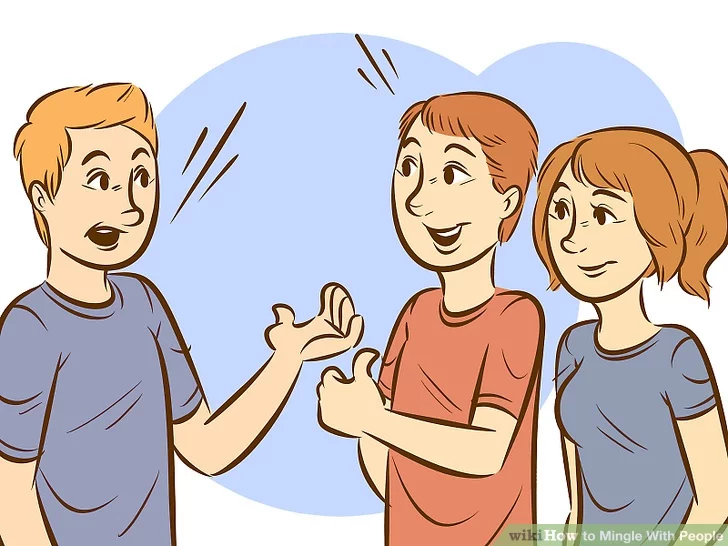
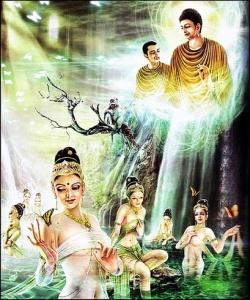

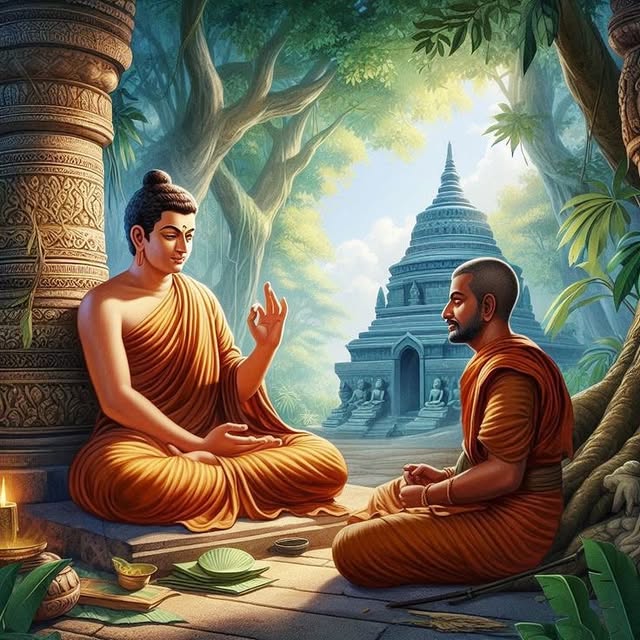
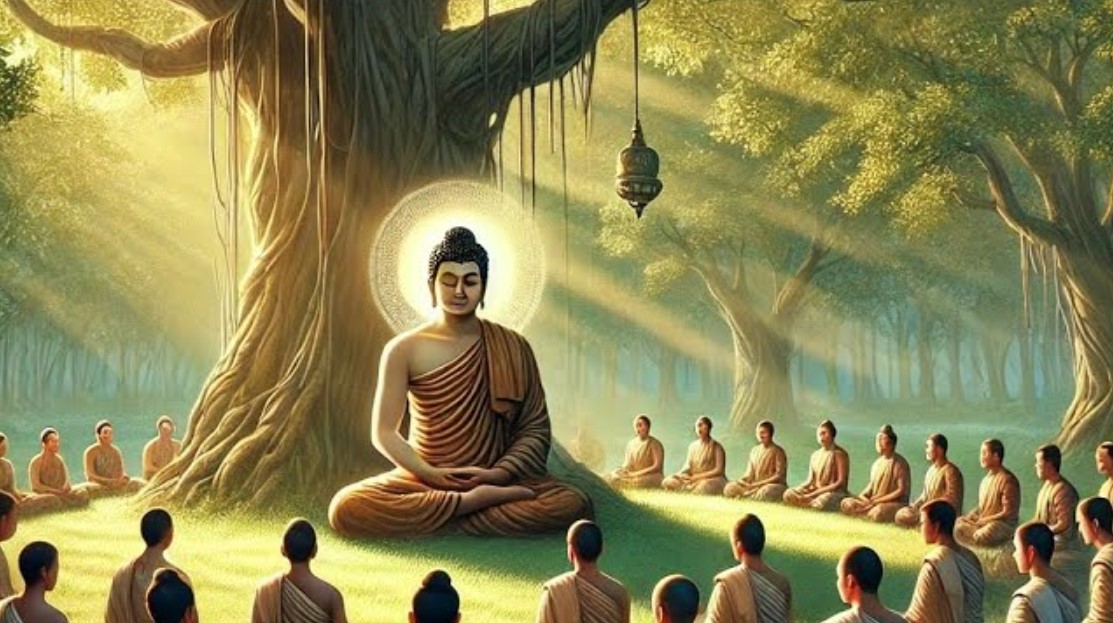
Comments